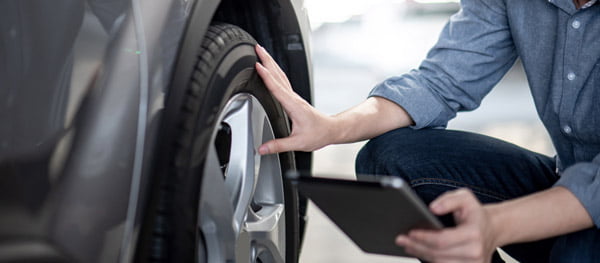Winter is finally coming to an end, and it won’t be long until we are back on the road, taking those beloved family road trips across the country again. While there might not be the same winter driving conditions, spring driving comes with its unique dangers, and Canadian drivers need to be alert to these hazards to make sure that they are driving safely.
With warmer weather, more people will be out and about, taking walks and enjoying strolls throughout the city. This means that you will need to be more alert to pedestrians who are crossing the street and more people riding their bikes. You will also notice more wildlife around the area as many animals begin to come back out from hibernation. They will usually be crossing over busy roads and highways as they start to look for something to eat.
All of the ice and snow that had built up over winter will start to melt, paired with the spring rains; this can cause a lot of flooding, especially near waterways. When there are notably heavier rains, this can cause flooding on the road and form huge, deep puddles in some areas. If you drive through these puddles, your tires will often start losing traction with the road, which can create a dangerous situation. The loss of traction due to water is known as hydroplaning. While hydroplaning is quite dangerous, there are ways that you can avoid it by using more caution while you drive, as well as keeping up with good tire maintenance for your vehicle. One way to avoid hydroplaning is to not use your vehicle’s cruise control feature when its raining as you could lose control of your vehicle.
These are our top maintenance tips for your vehicle as spring approaches:

Switch your winter tires
If you installed winter tires, you should be getting ready to swap out your winter tires during this time of year. There are some mandatory dates to do this in some locations in Canada. However, you should start to book your appointment when it is regularly over seven degrees celsius. Choosing summer or all-season tires is better when handling on roads that are not covered in snow and ice. Winter tires have more flexible tread, which is better for traction on snow and ice. However, it will be rendered less effective when used in warmer weather, and this will also cause them to deteriorate faster.
Once your winter tires are replaced, be sure that you clean them off before storage. When you remove any excess salt from them, this helps prevent corrosion damage. Be sure that you keep your winter tires stored in an area that is cool and dry to keep them in the best working condition for use next winter.
Rotate your tires
Since you will be switching out your winter tires anyway, it is also a good idea to have your tires rotated. Tire rotation means that your back tires will be placed at the front and vice versa.
Check Tire Pressure
Now that you have swapped your tires out, you will want to make sure you have your tires are properly inflated. Not only is this good for the longevity of your tires, it also helps with efficient fuel consumption. And with gas prices on the rise, efficient fuel consumption is essential.
